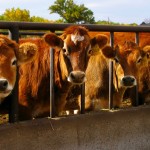For John Prescott, a move to end farmers’ right to import certain veterinary drugs marks a significant turning point in the fight against antimicrobial resistance in Canada. The Public Health Agency announced last year that Health Canada’s Veterinary Drugs Directorate would introduce new regulations requiring veterinary oversight of antibiotics used in food animals, such as […] Read more












